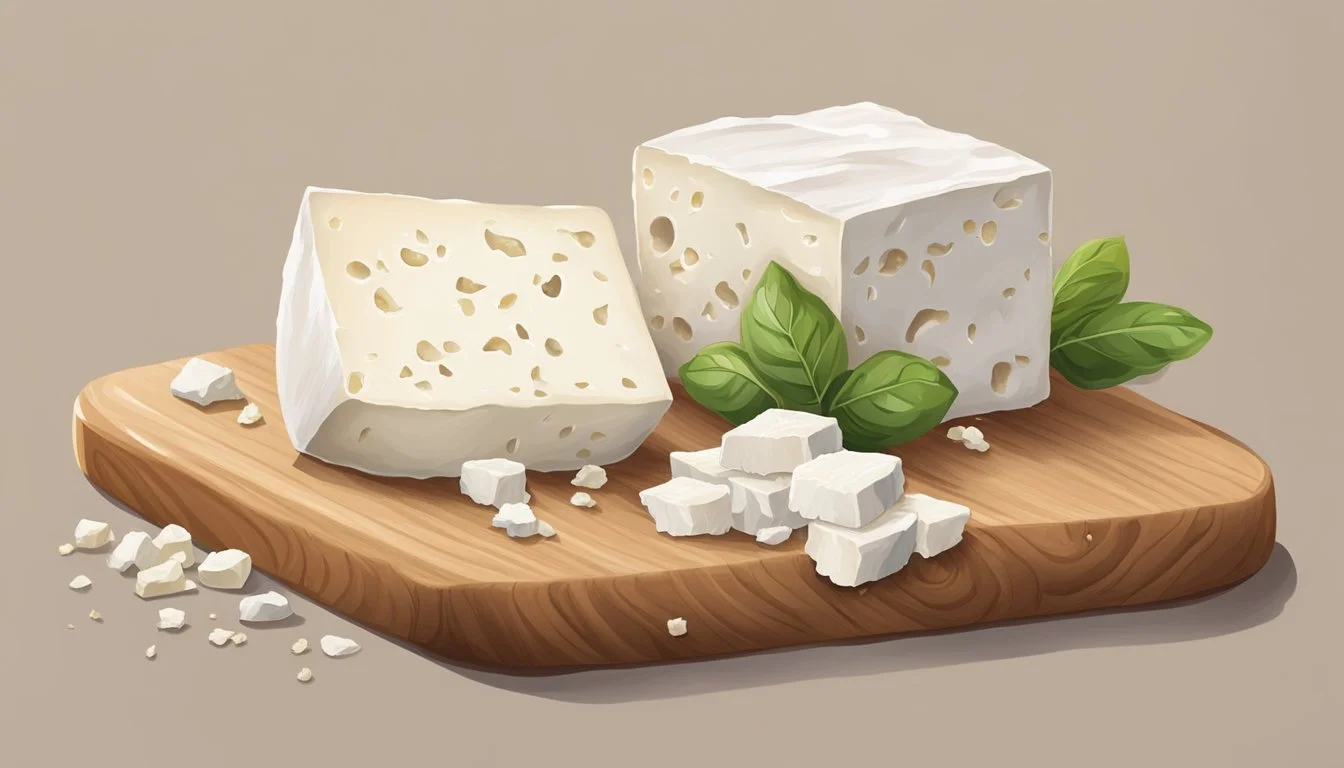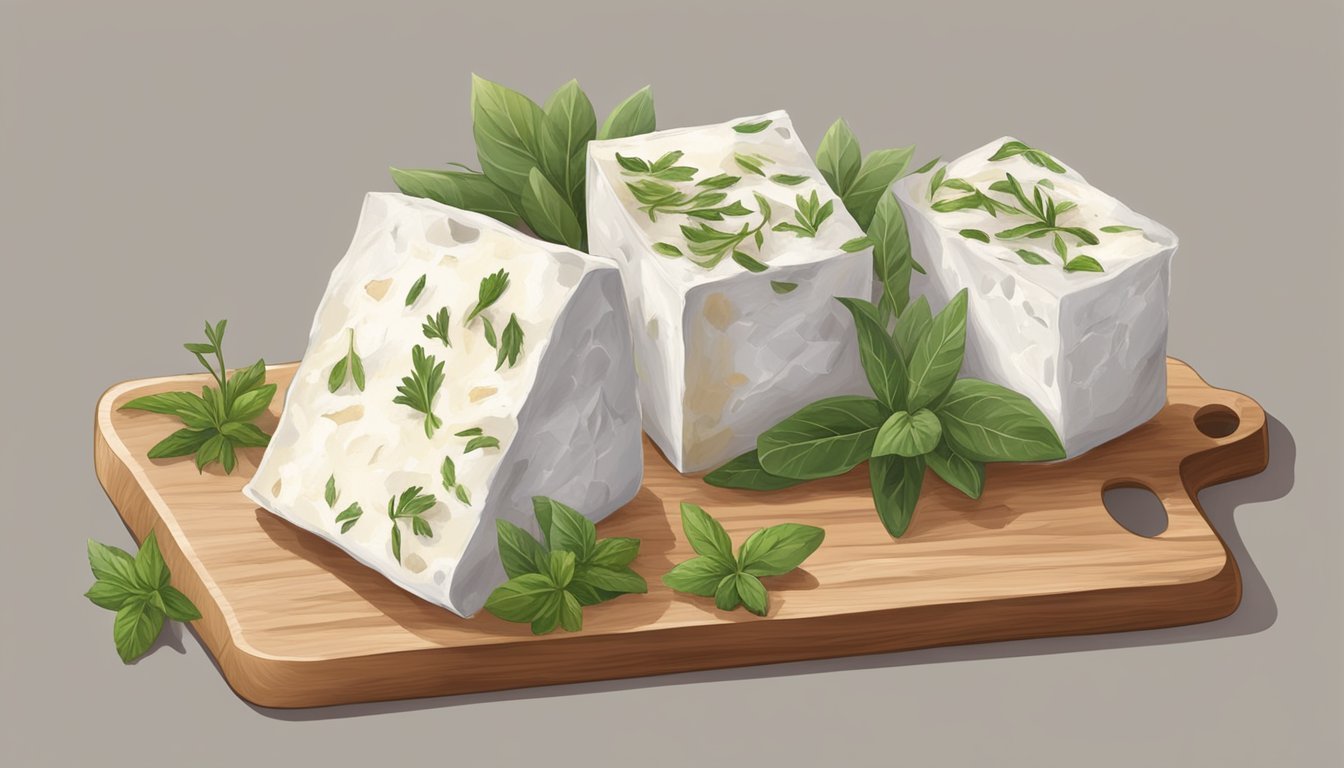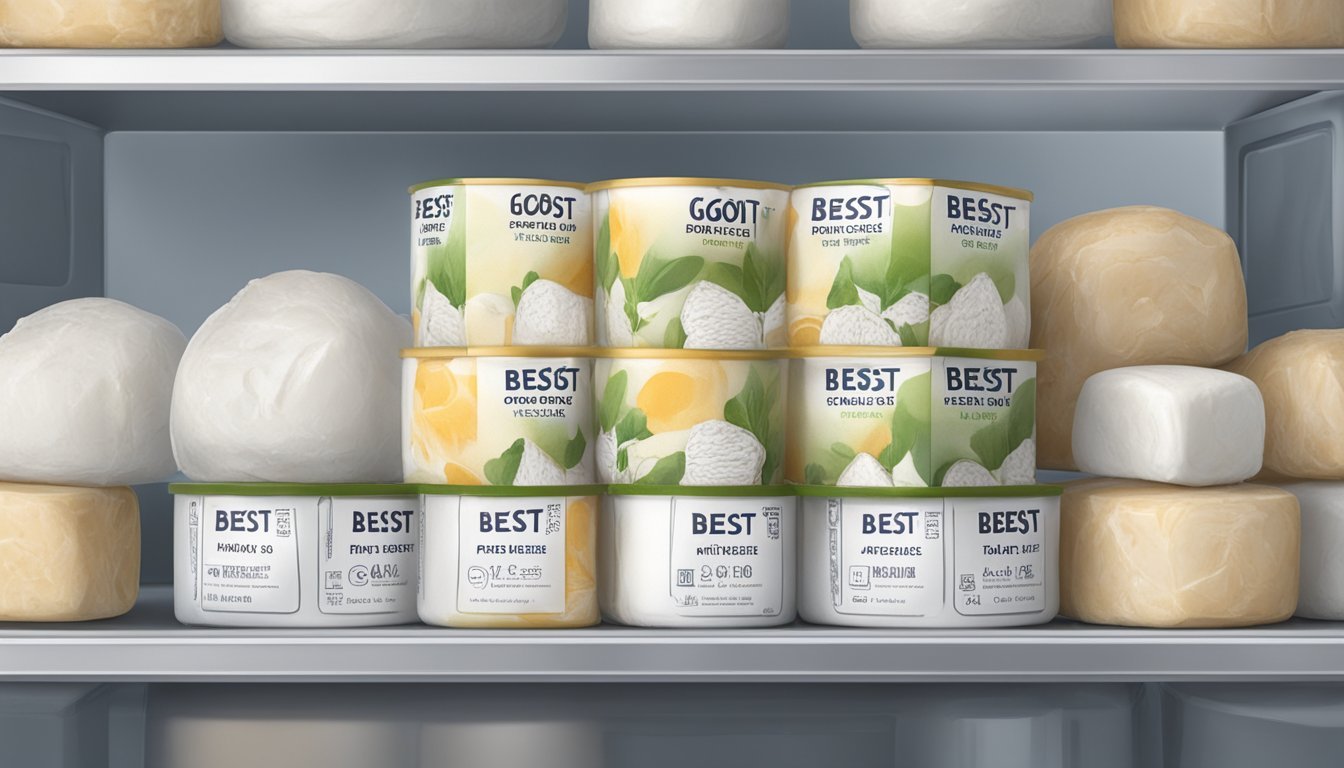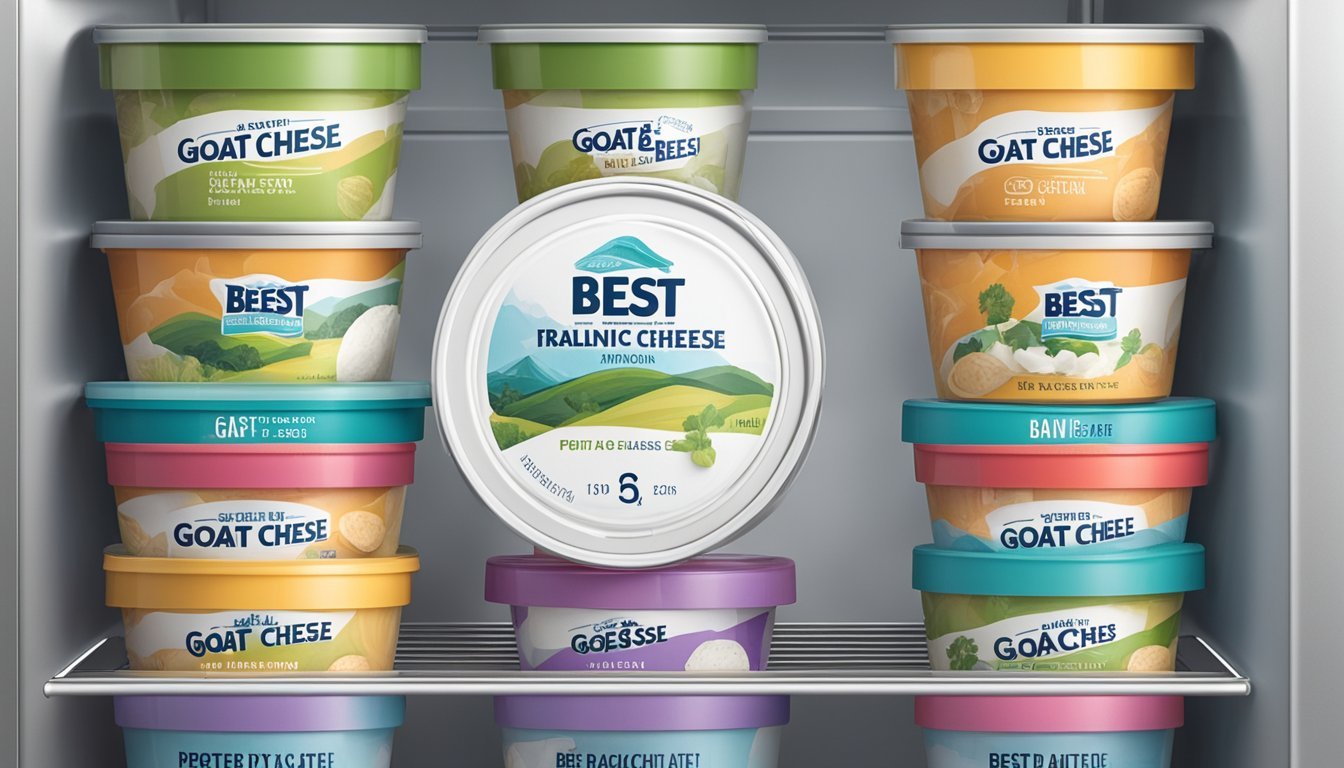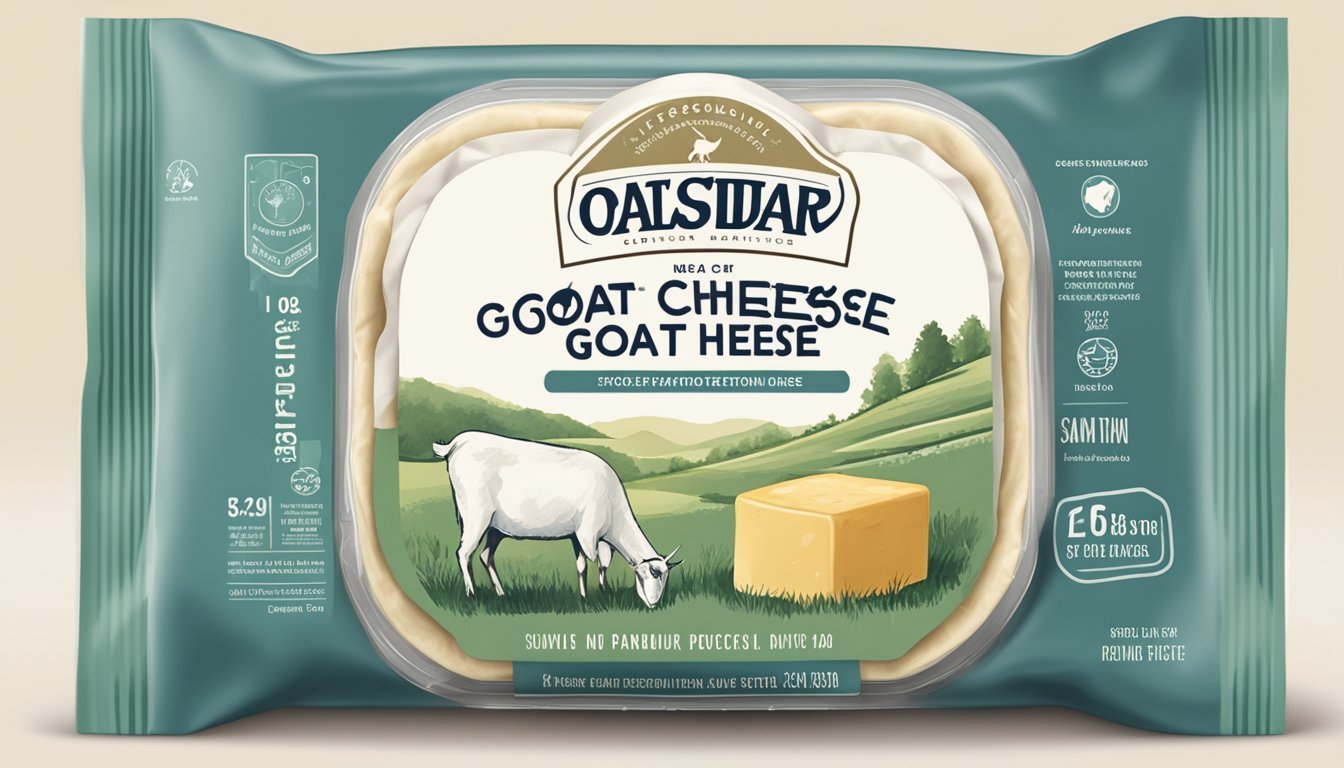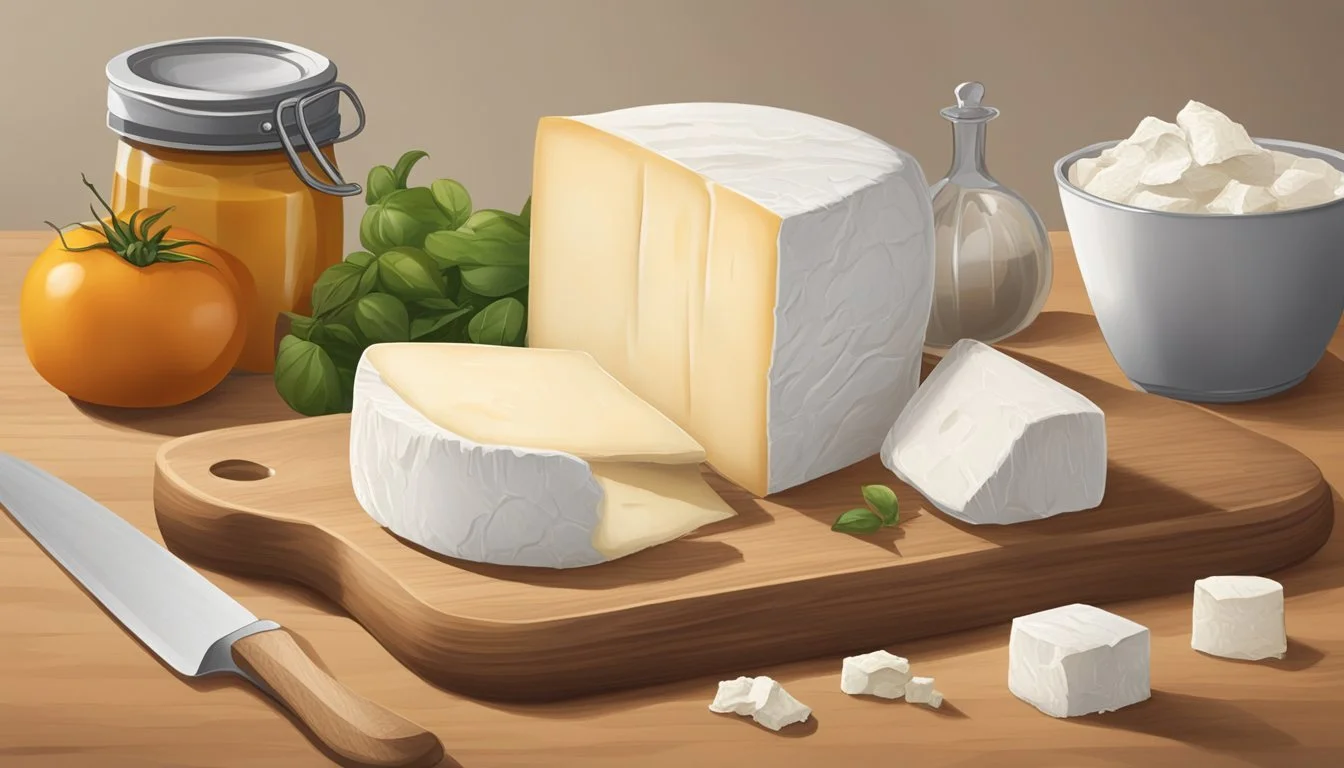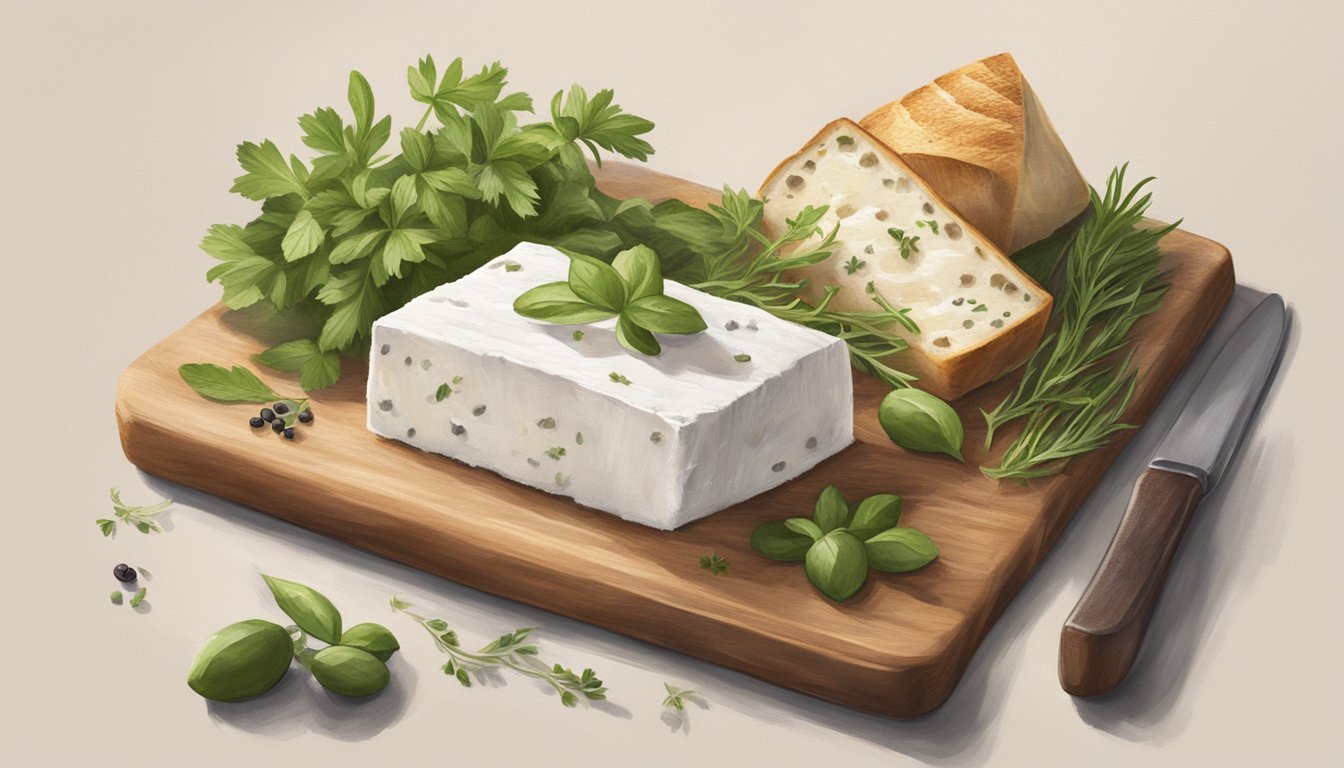How Long Does Goat Cheese Last?
Shelf Life and Storage Tips
Goat cheese (how long does cheese last?) is a popular and versatile dairy product known for its soft texture and tangy taste, enjoyed across various culinary applications. The shelf life of goat cheese is influenced by multiple factors including its type, packaging, storage conditions, and whether it has been opened. Unopened goat cheese (What wine goes well with cheese?) can generally retain peak quality for a few weeks past its printed date when stored correctly in the fridge. However, the duration for which it maintains its freshness post-opening is comparatively shorter.
Once goat cheese is opened, the exposure to air can influence its rate of spoilage. Soft goat cheeses (What wine goes well with goat cheeses?) are particularly susceptible to quality loss and are best consumed within one to two weeks of opening. Storing opened goat cheese properly involves wrapping it in wax paper followed by placing it in an airtight container in the refrigerator. For those interested in longer storage durations, freezing goat cheese is a viable option that can extend its palatability for several months, albeit with potential texture changes upon thawing.
Understanding Goat Cheese
When it comes to goat cheese, its types vary greatly, and so does its nutritional value—factors which play vital roles in determining its shelf life and quality.
Varieties of Goat Cheese
Fresh Goat Cheese: This variety is often soft and spreadable with a tangy flavor. It does not undergo an aging process and typically has a shelf life of up to two weeks after opening.
Firm Goat Cheese: Aged longer, they have a firmer texture, may be crumbly, and can last a bit longer than fresh varieties.
Semi-Soft to Semi-Hard: These are aged to various extents and can be versatile in recipes, ranging from crumbly textures to firm slices.
Aged Goat Cheese: The aging process for goat cheese can last from a few weeks to several months. Aged varieties have a reduced moisture content, which contributes to a longer shelf life and can enhance the flavor profile.
Nutritional Profile
Table 1: Nutritional Values per 1 oz (28g) of Goat Cheese
Nutrient Amount Calories 75 Fat 6g Saturated Fat 4g Cholesterol 13mg Sodium 130mg Carbohydrates 0.1g Protein 5g Calcium 40mg
Fresh goat cheese is relatively lower in calories and fat than many aged, hard cheeses and provides a good amount of protein. It also offers calcium, crucial for bone health, though it should be consumed in moderation due to its cholesterol content. Aged goat cheese generally contains more concentrated nutrients compared to its fresh counterpart.
Storage Fundamentals
Effective storage extends the shelf life of goat cheese, maintaining its freshness and flavor. Precise temperature control and proper packaging are at the heart of these fundamentals.
Proper Storage Conditions
One must store goat cheese in a refrigerator to preserve its quality. The ideal storage temperature for goat cheese is between 34°F and 40°F. To prevent bacterial growth, it should not be left at room temperature for more than two hours. If long-term storage is necessary, freezing goat cheese is an option, though it is best consumed within several months to maintain its taste.
Packaging and Wrapping Methods
Goat cheese should initially be removed from its original packaging once opened. Proceed to wrap the cheese in wax paper or parchment paper, which allows the cheese to breathe while maintaining its humidity level. Next, place the wrapped cheese in an airtight container or ziplock bag to prevent it from absorbing other flavors from the refrigerator. For semi-hard to semi-soft cheeses (What wine goes well with soft cheeses?), one could also use plastic wrap or aluminum foil, though these methods might not preserve the cheese's quality as effectively as wax or parchment paper. Always label the container with the current date to keep track of its freshness.
Shelf Life and Freshness
When considering the longevity of goat cheese, a consumer's primary concerns tend to revolve around the product's shelf life expectancy and the signs that indicate its freshness and quality.
Shelf Life Expectancy
Unopened goat cheese, under proper refrigeration, typically has a shelf life of up to two months. However, once the seal is broken, its freshness is best maintained for up to two weeks. To optimize this period, the cheese should be wrapped in wax paper and stored in an airtight container in the fridge.
Semi-hard to semi-soft goat cheeses: These varieties can often remain at peak quality for a few weeks past their printed expiration dates if kept refrigerated.
Soft goat cheeses: These are more perishable and should be consumed sooner, as they tend to lose quality more quickly.
Freezing goat cheese can prolong its shelf life, although it may affect texture and flavor.
Assessing Freshness and Quality
To ensure one is enjoying goat cheese at its best, several indicators should be assessed:
Smell: Fresh goat cheese should have a clean, mildly tangy scent. Any sour or off-putting odors can be a sign of spoilage.
Texture: Ideally, it should be consistent with its type - whether creamy or firm. If the texture appears excessively dry, slimy, or shows evidence of mold, it's no longer fresh.
Taste: The flavor profile should be tangy and savory. A sour taste, differing significantly from its original flavor, indicates it's past its prime.
Regular checks are recommended to ensure that goat cheese remains enjoyable and safe to eat.
Signs of Spoilage
When assessing goat cheese for spoilage, it's essential to know that visual changes and scent are the most definitive indicators.
Visible Indicators
The presence of mold on goat cheese is a clear sign that it has gone bad. Mold can appear in various colors, including white, green, black, or pink. One should inspect the cheese thoroughly, as mold may not always be immediately obvious. Apart from mold, discoloration or a slimy texture can also denote spoilage. The cheese may exhibit patches that are not part of its natural color palette or a surface that has lost its typical dryness or firmness.
Olfactory and Taste Markers
An off smell is a telltale sign of spoilage in goat cheese. If the cheese emits a foul odor that differs from its normally tangy and slightly earthy scent, it's advisable to discard it. Tasting the cheese is not recommended if it smells bad, as this could pose a health risk. A sour or bitter taste is another indicator that the cheese is no longer good to eat.
Safety and Handling
Proper safety and handling of goat cheese are crucial to prevent food poisoning and to maintain its quality. Attention to temperature control and cleanliness can effectively minimize the risk of bacterial growth and contaminants.
Food Safety Concerns
Temperature Control: Goat cheese should be stored at temperatures below 40°F (4°C) to prevent the formation of harmful bacteria. If left at room temperature, one should not exceed a duration of two hours, as this increases the risk of bacterial contamination and food poisoning.
Contaminant Prevention: To safeguard against contaminants, goat cheese must be handled with clean equipment and stored in a manner that avoids cross-contamination with other foods.
Handling and Preparing Goat Cheese
Proper Storage: When refrigerating, one should place goat cheese in airtight containers or wrap it tightly in plastic wrap or aluminum foil to limit air exposure which can lead to spoilage.
Soft goat cheeses: Typically last 1 to 2 weeks in the refrigerator
Semi-hard to semi-soft goat cheeses: Often remain fresh for a few weeks past their printed dates
Incorporating in Recipes:
Ensure hands and surfaces are clean when handling goat cheese to prevent introducing bacteria.
Follow the recipe instructions carefully and add goat cheese as directed, usually later in the cooking process to preserve its texture and flavor.
Maximizing Goat Cheese Usage
To maximize goat cheese usage, one should understand how to incorporate it effectively in recipes and the best practices for its preservation.
Incorporating Goat Cheese in Recipes
When using goat cheese in recipes, consider its unique tangy flavor that pairs well with various cuisines. It is versatile and can be crumbled over salads or melted into sauces. For baking purposes, soft goat cheese enhances the richness of pastries and bread. When planning meal prep, leveraging goat cheese’s compatibility with multiple ingredients can reduce cook time, as it requires minimal handling — crumbling into or topping off a dish is often sufficient.
Salads: Crumble goat cheese over mixed greens with a drizzle of balsamic vinaigrette.
Baking: Mix softened goat cheese into the dough for a flavorful twist on bread.
Quick meals: Add goat cheese to warm pasta for a creamy touch with no additional cook time required.
Preservation Techniques
Proper preservation of goat cheese extends its usability beyond its initial freshness date. Freezing goat cheese is an effective way to preserve it for longer periods; it maintains quality for several months when stored in the freezer.
To freeze goat cheese:
Wrap the cheese tightly in wax paper.
Place the wrapped cheese in a zip-top bag or an airtight container.
Record the date on the container before placing it in the freezer.
When ready to use, thawing the cheese in the refrigerator overnight preserves its texture and flavor. Be mindful that while frozen goat cheese is best reserved for cooked dishes since freezing can alter its creamy texture slightly.
Prepping leftovers: Freeze leftover goat cheese in pre-portioned amounts for ease of use in future recipes.
Thawing: For best results, allow frozen goat cheese to thaw gradually in the refrigerator.
Advanced Storage Techniques
Preserving the quality of goat cheese can be achieved through proper refrigeration and freezing methods. These storage techniques extend the freshness period and prevent spoilage.
Refrigeration Tips
When refrigerating goat cheese, maintaining a consistent temperature and humidity level is crucial. Goat cheese should be stored at a temperature of around 4°C (39°F), which is typically the average setting of a refrigerator. To sustain optimal humidity, it's best to:
Wrap the cheese in wax paper or parchment to allow it to breathe, then place it in an airtight container.
Use the vegetable drawer of the refrigerator if possible, as it tends to have higher humidity levels ideal for cheese storage.
Freezing and Thawing Goat Cheese
Freezing goat cheese requires careful handling to ensure taste and texture are preserved. To effectively freeze goat cheese:
Divide large quantities into smaller portions.
Wrap each portion tightly in plastic wrap or aluminum foil.
Place wrapped cheese in a freezer bag or an airtight container to avoid freezer burn.
To thaw frozen goat cheese, one should:
Transfer it from the freezer to the refrigerator and let it thaw slowly. This process can take several hours or even a full day, depending on the size of the portion.
Consume thawed goat cheese within a few days for the best quality.
Following these advanced storage techniques ensures that goat cheese retains its quality and flavor, whether it's refrigerated or frozen and later thawed.
Labeling and Tracking
When dealing with goat cheese, both opened and unopened packages require proper labeling to ensure food safety and optimal freshness. Labels act as markers for tracking the amount of time the cheese has been stored, which is crucial considering that opened goat cheese typically lasts for 5-7 days in the refrigerator.
For unopened goat cheese, one should always note the expiration date provided by the manufacturer. However, once the seal is broken, the countdown begins, and here are the steps they should take:
Immediately after opening, they must write the current date on the package or on a piece of tape affixed to the container.
If the goat cheese is transferred to an airtight container or a vacuum-sealed bag for storage, the label must migrate with it. This preserves the integrity of the tracking system.
The container or bag should then be placed in the refrigerator at a consistent temperature to maintain its quality.
It’s recommended to use clear and straightforward labeling. Here is an example format they could use for labels:
Item Date Opened Expiration Date Notes Goat Cheese MM/DD/YYYY MM/DD/YYYY (e.g., "Vacuum-sealed")
Through diligent labeling and tracking, consumers can greatly reduce the risk of consuming spoiled food while enjoying their goat cheese in its best condition.
Packaging for Longevity
To enhance the shelf life of goat cheese, proper packaging is essential. Vacuum-sealed packaging is a prime choice as it rids the package of air, preventing the growth of microbes and the introduction of contaminants that can lead to spoilage. This method of packaging maintains the cheese's quality and can extend its freshness.
When vacuum-sealed options are unavailable, one can maintain freshness by wrapping the cheese efficiently. Goat cheese should first be wrapped in wax or parchment paper which allows the cheese to breathe while retaining moisture. Once wrapped, it should then be placed in an airtight container or resealable plastic bag before storing it in the refrigerator.
Refrigeration plays a significant role in preserving goat cheese. Here are ideal storage guidelines:
Temperature: Keep goat cheese at a consistent temperature between 35°F and 45°F.
Location: Store the cheese in the less-cold part of the fridge, such as a vegetable drawer, to avoid freezing.
For those planning to keep goat cheese for an extended period, freezing is a viable option. Freeze the cheese in small portions and use heavy-duty freezer bags to combat freezer burn. Though freezing can alter the texture, it will maintain the taste when used in cooked dishes. When one is ready to use the frozen goat cheese, they should thaw it in the refrigerator for several hours or overnight, ensuring the texture remains as consistent as possible.
Purchasing and Usage Tips
When purchasing goat cheese, consumers should consider both the type and shelf life to maximize freshness and flavor. Once at home, proper storage and creative use of leftovers can ensure that the cheese retains quality and reduces waste.
Buying Guide
When selecting goat cheese at the grocery store, it is imperative that consumers inspect the packaging for any signs of damage or bloating, which might indicate spoilage. They should also check the expiration date to ensure the longest possible shelf life. Chevre, a popular variety of soft goat cheese, should appear moist but not overly wet. For harder varieties, look for a firm texture without any dry or cracked edges. Purchasing goat cheese from reputable grocers or specialty cheese shops can often yield higher-quality selections.
Soft Goat Cheese: Use within a week or two.
Semi-Hard Goat Cheese: Lasts slightly longer than soft cheese.
Hard Goat Cheese: Optimal for grating, with a longer shelf life.
Utilizing Leftovers
If they find themselves with leftover goat cheese, consumers should remember that it works well in various dish types served in homes and restaurants. Incorporate small quantities into salads or use as a topping on toast to enjoy its distinct flavor. For a longer-lasting option, they can freeze leftover goat cheese. However, it's worth noting that texture may change post-freezing, making it better suited for cooked dishes over fresh ones.
In Salads: Crumble leftover cheese for added flavor.
Cooked Dishes: Utilize thawed cheese in baked meals or sauces.
Specialty Goat Cheeses
Specialty goat cheeses encompass a range of textures and flavors, each with unique storage considerations to maintain their quality and extend shelf life.
Cheeses with Unique Characteristics
Brie: As a soft-ripened goat cheese with a distinctive bloomy rind, goat brie should be stored in the fridge and consumed within 1-2 weeks after opening. Its creamy texture and mild taste are best preserved when kept at stable temperatures.
Feta: Goat feta, known for its crumbly texture and tangy flavor profile, can last up to four weeks when stored in brine within the refrigerator. The brine helps to maintain its characteristic firmness and prevent drying out.
Crottin: This small, aged goat cheese develops a hard texture as it matures. In the fridge, crottin can be kept for several weeks and should be wrapped in wax paper to retain moisture without trapping too much humidity.
Blue Cheese: Goat blue cheese should be stored in the refrigerator, ideally wrapped in wax paper and placed in an airtight container. This helps to contain its strong aroma and prevent the spread of mold to other foods, and it can last up to three weeks.
Cream Cheese & Ricotta: These fresh goat cheeses are high in moisture and therefore highly perishable. Refrigerated properly, they should be consumed within one week as they are more susceptible to bacterial growth.
Soft-Ripened Goat Cheese: This category includes cheeses like chevre that are soft and often spreadable. They should be eaten within one week to ten days for optimal quality, as their delicate nature doesn't withstand long storage periods.
Parmigiano: Goat's milk is less commonly used for Parmigiano, but when it is, such hard cheeses can usually last longer, up to a few months if stored properly in the refrigerator, often wrapped in parchment or cheese paper, then placed in a plastic bag.
Understanding Expiration Dates
Expiration dates on food products like goat cheese are the manufacturer's estimate of how long the cheese will retain its peak quality. It is essential to differentiate between food safety and food quality when interpreting these dates.
For unopened goat cheese, the expiration date is more of a guideline for optimal freshness rather than an absolute cut-off point for safety. Under proper storage conditions, unopened goat cheese can surpass its expiration date and still remain safe to consume.
Here are critical points to consider:
Storage Conditions: To maintain quality past the expiration date, goat cheese should be stored at a consistent temperature in the refrigerator.
Visual Inspection: Always inspect the cheese for signs of spoilage such as mold, off-odor, or an unusual texture.
Taste and Use: While minor changes in flavor after the expiration date may occur, they are not necessarily indicators of spoilage.
When discussing unopened goat cheese:
Short-Term Expiration:
Just past the expiration date: Usually still safe if there are no spoilage signs.
Storage plays a crucial role in preserving its safety.
Long-Term Expiration: As time passes beyond the expiration date, the risk of spoilage increases, even if there are no immediate signs. Consuming significantly expired goat cheese is not recommended.
Consumers must remain vigilant and apply good judgment when deciding to consume any cheese beyond its expiration date. A combination of storage practices and sensory evaluation should guide the decision.
Beyond Storage: Enjoying Goat Cheese
With goat cheese properly stored to retain its quality, one can explore the delightful realms of its taste profiles and food pairings, making the most of this cheese's versatility in various culinary applications.
Taste Profiles
Goat cheese is renowned for its distinctive flavor spectrum that varies from tart and tangy to earthy and mildly sweet, influenced by factors such as diet, preparation, and age. The texture ranges from creamy and spreadable to firm and crumbly, while the color transitions from bright white to pale yellow, depending on the type. Varieties like Chèvre boast a fresh, lemony zest, while aged options like Tomme de Chèvre present deeper, savory notes.
Matching with Other Foods
When it comes to pairing, goat cheese is a versatile player. Here are some optimal combinations:
Fruits:
Strawberries harness sweetness.
Pear slices balance the tanginess.
Nuts: Almonds or walnuts add a crunchy texture contrast.
Breads: Crusty baguettes or seeded crackers offer a neutral base.
Wines: A crisp Sauvignon Blanc or a light-bodied Pinot Noir complement the cheese’s flavors.
To enhance a meal or a snack, understanding these subtle yet impactful nuances of goat cheese can transform a simple dish into a delicately balanced culinary experience.
Culinary Ideas and Inspirations
Goat cheese is a versatile ingredient that chefs and home cooks use to elevate various dishes. Its tangy flavor and creamy texture can transform a simple salad into a gourmet experience. Chefs recommend adding crumbled goat cheese to a bed of mixed greens, along with nuts and vinaigrette, to create a balanced dish with a variety of textures and flavors.
In terms of recipes, goat cheese is often the star. It pairs well with sweet and savory counterparts, making it a fantastic filling for appetizers such as stuffed mushrooms or figs. Goat cheese enhances pastas and pizzas as well, where it can be dolloped on top of sauces to add a creamy finish.
For those who enjoy baking, goat cheese can be included in savory pastries or quiches (What wine goes well with quiche?) for depth of flavor. Its melting properties make it ideal for incorporating into dough, yielding baked goods with a rich, moist center. When baking with goat cheese, one should be mindful of its moisture content and how it may affect the dish's overall texture.
Type of Dish Suggested Use of Goat Cheese Salads Crumbled over fresh greens Appetizers Filling for stuffed dates Pastas Layer for lasagna Pizzas Toppings with herbs Baking Quiche filling
It should be noted that goat cheese is not limited to traditional uses; its flavor profile allows for innovative recipes, and it can be a creative substitute in many dishes where one desires a smooth texture and a pleasant, tangy taste.
Goat Cheese Myths Debunked
Myth 1: Goat Cheese Contains No Lactose
While goat cheese contains lower levels of lactose than some cow's milk products, it is not lactose-free. Individuals with lactose intolerance may find goat cheese easier to digest, but it's important to assess individual tolerance.
Myth 2: All Goat Cheese is Low in Fat
Goat cheese can vary in fat content. Soft goat cheeses tend to have lower fat levels compared to hard goat cheeses. It's crucial to check the nutritional information for accurate fat content.
Myth 3: Goat Cheese Never Develops Mold
Just like any cheese, goat cheese can develop mold. Stored properly, it resists mold well, but if mold appears, it should not be consumed.
Myth Busted Reality Goat cheese is lactose-free Contains lower levels, but not lactose-free Goat cheese is always low in fat Fat content varies by type Goat cheese doesn't get moldy Can develop mold, check regularly
Consumers should be wary of these misconceptions and always check the label for specific qualities of the goat cheese they purchase. Knowledge of proper storage techniques is key to extending the life and quality of goat cheese.

